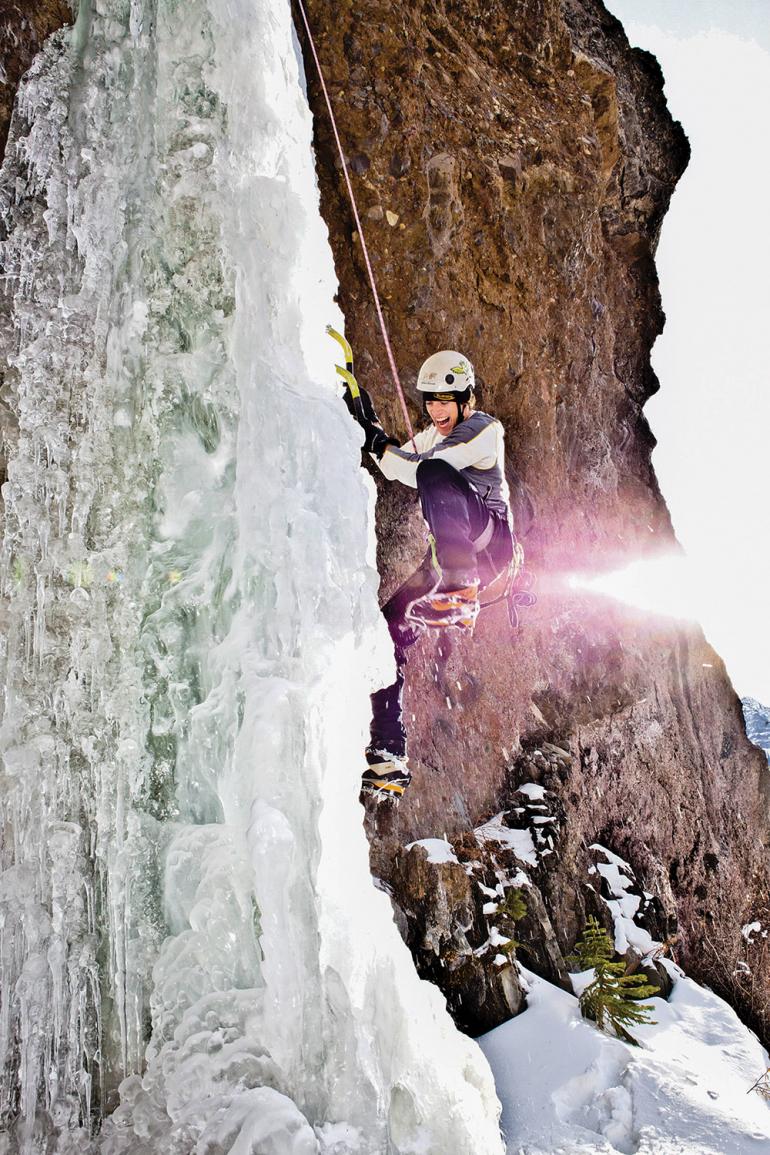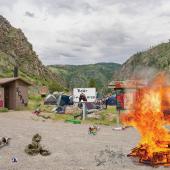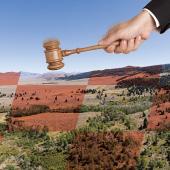Between the Lines
Seeing through a misguided narrative.
Growing up, I had never thought of the outdoors as part of my identity, nor did I find it unusual that I was a girl doing these things. Chopping wood was a chore that we all did. My fearless mother tramped all over the woods, dragging us behind her in a quest to “see around the corner.” In our rural Montana town, hiking was what everyone did on the weekend and when the snow started falling, you went skiing or snowmobiling. But when I left home and moved across the state to attend college in a mountain town full of climber bros and skier dudes, it turned out that knowing how to set up a tent was a desirable quality. I learned that there are two types of girls: those who were outdoorsy and those who were from California.
As I began to explore who I was beyond my hometown, I began to take great pride in keeping up with the boys. It became a characteristic of how I approached outdoor adventures. My wardrobe slowly acquired a tinge of plaid and Patagonia. I became fluent in outdoor brands and got an REI credit card so I could earn cash back on my purchases. I was learning how I wanted to explore, beyond following my mother, which was incredibly empowering as an individual. However, I was also incorporating it into how I portrayed myself and how I judged others. I began to look down on the new Montana transplants with their UGG boots and timidity toward driving in the snow. I dismissed their desire to look good with fashionable clothes and date-night smokey eyes.
I learned that exploring is not about the brand on your jacket, or what others think of you, or what the dude at the climbing gym says. I learned that it is about seeing what is out there. It's about adventure in its most primal form.
But the tomboy, keep-up-with-the-boys aesthetic I was going for was similarly defined by male attention. To prove oneself sufficiently outdoorsy and still attract the boys is a knife-edge balance. You must be down for any adventure, but up for being mansplained to about carabiners and clove hitches. You represent the untouched innocence of wilderness—wild and free. You are rare and precious, untouchable and yet irresistible. There’s a bonus point if you know who Alex Honnold is but a demerit if you don’t let the guy in the climbing gym explain what you are doing wrong. But crucially, absolutely crucially, you must disapprove of the “other” girls, like the one who cared about boys (even though you were also looking for attention) with their perfectly made-up faces (even though you matched your plaid shirt and hiking boots).
|
|
The outdoor community can be immensely welcoming and supportive. But it can also be a self-fulfilling toxic prophecy. For women, we are supposed to look like a North Face ad while simultaneously being a bizarre mix of helpless and competent. But women have always gone outside. In 1955, 67-year-old Grandma Gatewood told her children she was going for a walk and started on her first of three thru-hikes on the Appalachian Trail. In a single season, Alison Hargreaves was the first person—woman or man—to solo the Six Great North Faces of the Alps. Junko Tabei, a 45-year-old housewife, was the first woman to summit Everest, on which she reflected, “I can't understand why men make all this fuss about Everest, it’s only a mountain.”
Amazing women have always climbed, hiked, skied, and run across mountains, rivers, and valleys. They come from all walks of life with diverse backgrounds. They’ve raised children, they’ve raised hell, and they were driven by the same thing as I was: to get outside and see what adventure awaits in the great outdoors. But somehow, I had lost my purity of purpose.
Now is when you should learn a bit more about my mother. Before she was leading small children through the woods, she studied range science in the mid-1980s and fought fires between semesters. She finds lakes on maps, trail or no trail, and marches off into the woods to find them. She is strong and curious, and everything I want to be when I grow up. One time, she found a lake on a map and led us on four different adventures to eventually find it. She looks nothing like an outdoor gear ad—more like having just stepped away from the garden as opposed to an outdoor store. Somewhere along the way, I forgot what she had taught me.
From her, I learned that exploring is not about the brand on your jacket, or what others think of you, or what the dude at the climbing gym says. I learned that it is about seeing what is out there. It’s about adventure in its most primal form. This trendy wild-and-free narrative isn’t real. It is a myth drawn from ads, socialization, and our own insecurities, not from the women who came before us. It becomes real when we allow it to become our story and pit us against each other. However, ultimately, I can create the community I live in. I am choosing to create a narrative that will welcome those who come after.


















